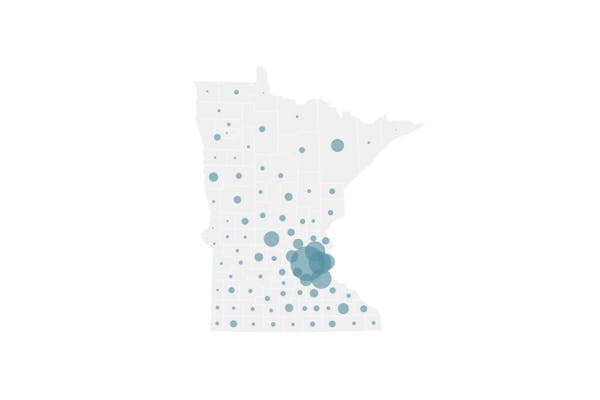A participant in last month's Sturgis Motorcycle Rally in South Dakota is among the 1,830 people in Minnesota who have died of COVID-19.
The rider was a man in his 60s with underlying health conditions who was hospitalized and placed in intensive care following his infection with the coronavirus that causes COVID-19, according to the Minnesota Department of Health.
Fifty Minnesotans who took part in the Sturgis event, which draws hundreds of thousands of people each summer, have tested positive. The death is thought to be the first due to infection at Sturgis.
No one event appears to be the epicenter for the infections suffered by the man who died or any other Minnesotans, said Kris Ehresmann, state infectious disease director.
"They attended multiple events, stayed at multiple campgrounds, were inside, outside," she said. "I think, given the number of individuals that were participating in the Sturgis event, I think it's fair to say that pretty much everyone was in a crowded setting."
Several other states have reported infections among Sturgis participants as well, and Minnesota has found signs of secondary transmissions from Sturgis participants to others back home. One participant from Minnesota with a confirmed infection appeared to spread the virus at a recent wedding, Ehresmann said.
The state on Wednesday reported another 761 lab-confirmed infections, bringing Minnesota's total in the pandemic to 77,085 infections — with an untold number of additional infections being undetected in people who experienced mild or no symptoms. The state also reported seven deaths on Wednesday.
Daily case counts have been rising since mid-August, raising concerns that a lack of mask-wearing and social distancing at group and social events could be fueling a new wave of the pandemic.
The state is falling short on three of its five goals for assessing its progress in the pandemic. The rate of COVID-19 hospital admissions per week is above the state target of 4 per 100,000 people. However, that rate has declined from 7.1 on Aug. 12 to 6 on Aug. 24 — the most recent date for which information is available.
The state on Wednesday reported that 297 people were hospitalized for COVID-19, and that 135 required intensive care for breathing problems or other complications related to their infections.
While many of the Sturgis riders might have been infected indoors, Ehresmann said there seems to be confusion in the public about the relative risks of group events and crowds outdoors.
"Being outside is preferable to being inside, all things considered, when it comes to COVID transmission," she said. "Being outside does not eliminate risk. And being outside if you're not social distanced, if you're not wearing a mask, if you're not being attentive to all of the other important mitigation measures … doesn't save you, if you will, from COVID."
Few cases have been linked to an outdoor rodeo in northern Itasca County, where mask-wearing was not common among thousands of attendees. However, an outbreak was found among attendees at a campground concert in southwestern Lincoln County.
Fears of widespread infections didn't materialize in late May following the outdoor protests and riots over the killing of George Floyd.
Free testing of 7,706 people involved in the events as protesters or first-responders found only 120 confirmed infections — a rate of less than 2%.
A disproportionate rate of infections was found among minorities who were tested, suggesting to health officials that some were infected during close contacts at work rather than in the protests.

Want to share info with the Star Tribune? How to do it securely

'Safe recovery sites' would offer syringes, naloxone and more to people using drugs. The plan could be in peril.
New Minnesota GOP leaders seek peace with party's anti-establishment wing

Who is Republican Lisa Demuth, Minnesota's first House speaker of color?

